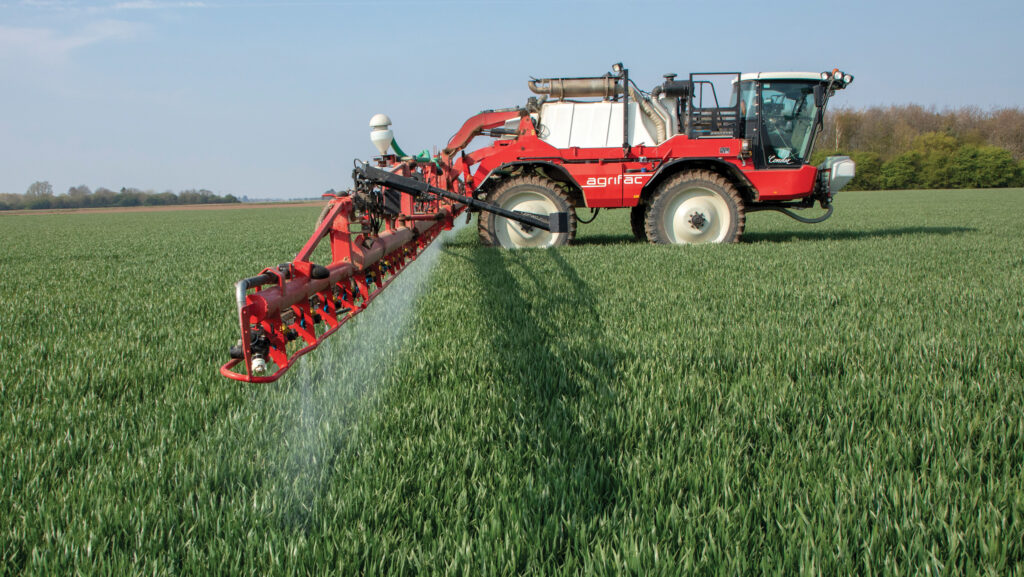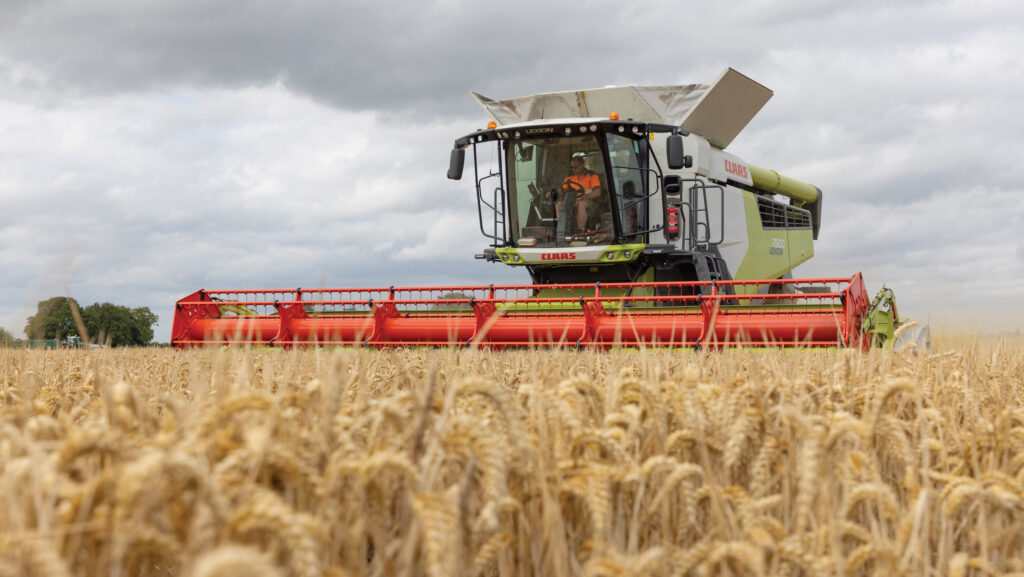Can biologicals help milling wheat growers hit protein specs?
 © GNP
© GNP Over the past couple of seasons, milling wheat growers have struggled to achieve 13% proteins, with AHDB figures showing Group 1s averaged the lowest levels in a decade at 12.5% in 2024 and 12.7% the season before that.
Piling on more bagged nitrogen in an attempt to boost proteins is not economical nor sustainable, so work is being done to explore alternative nutrition sources that could boost crop potential.
Once dubbed as “snake oil”, some biostimulant products have been around now for many years and have formed an important part of many grower’s input programmes.
See also: How to manage Cheer wheat to maximise yields and quality
However, more recently on the scene is the introduction of biofertilisers, which according to Rob Adamson of agronomy firm ProCam, are a whole different beast.
He says: “It’s not a case of moving on from biostimulants to biofertilisers – they are different and meet different needs.”
Biostimulants work by helping a crop to find and utilise nutrition more effectively, whereas biofertilisers are bacteria which actually deliver nutrition to the plant, he explains.

Rob Adamson © ProCam
Positive results
ProCam has seen positive results from the addition of N-fixing endophyte bacteria Encera on milling wheat crops over the past three seasons, averaging a 6% yield uplift, without any dilution of wheat protein.
“We’re seeing that yield uplift irrespective of the nitrogen programme, and the fact there is no dilution effect on the wheat protein is really important,” says Rob.
In 2023, grain analysis on a split field of milling wheat showed a 0.5% protein increase where Encera was applied, according to Procam.
“This was alongside the observation from the field that the Encera outyielded as well. So it shows there’s definitely not the dilution going on that we always concern ourselves with when improving milling yield.”

© GNP
It is thought biofertilisers generally deliver around 25-40kg/ha of nitrogen to a crop, as an alternative nitrogen source.
“How much nitrogen it provides will depend on how much N uptake there is from other sources. In a dry season you would expect it to probably over deliver, versus a year where a crop can freely take up N,” says Rob.
However, he does not believe the inclusion of Encera means growers can necessarily knock 30kg/ha off their programmes, but rather use the product as more of an insurance policy to “drip feed” nitrogen to the crop throughout the season.
“I don’t think biofertilisers are the silver bullet answer to hitting milling wheat proteins, but they are there as a support tool.
“The more diverse your sources of N, the better. If you use lots of different sources then you have got a more resilient nitrogen strategy.
“If you can drip feed nutrition and avoid these big ebbs and flows of nitrogen, then crop health is generally better.”
Last season
For ProCam agronomist Jim Nutting, last season was particularly unusual, with very few winter crops in the ground across his patch in Nottinghamshire, Lincolnshire and South Yorkshire.
“One particular farm, which was all milling wheat, had drilling dates ranging from mid-September to mid-February, so coming up with a fertiliser plan was a bit of a head scratcher,” he says.
To reflect the lower yield potential of crops, nitrogen rates were 40kg/ha less than he would usually prescribe for milling wheat.
“However, the post-mortem of these crops showed that, although we did get lower yields than average due to the weather, the yield outcome only justified a reduction of 15kg/ha of nitrogen.
“So, in effect we unintentionally cut the nitrogen rate too much, but covered that loss of nitrogen by the use of Encera,” says Jim.
In the first wheats, yields averaged 9.3t/ha and proteins ranged from 13.1-13.8%, well above the UK’s Group 1 average of 12.5% last harvest.
Spring milling wheat
Other spring wheat crops went in as late as the end of April, but wet and mild weather got them up and away quickly.
Not wanting to “chuck the kitchen sink” at them, but also keen to achieve milling spec, an application of biofertiliser, Encera and biostimulant, Twoxo Pro acted as an insurance policy to prevent protein dilution, if the crops did go on to yield.
“We actually had fairly good growing conditions with plenty of moisture there,” Jim says.
“The crop already had plenty of nitrogen in the soil, so we weren’t sure if these products would make a difference.”
He still applied an extra 40kg/ha of bagged N at flagleaf to boost proteins later on in the season.
Although some yields were subdued, proteins ranged from 12.7-14.1% across the farms where both Twoxo Pro and Encera were applied.
Jim says: “I would argue if a biofertiliser can give us results in a wet season where thankfully these spring crops produced a decent return, that the results will be even better in a drier year where you put fertiliser on the ground and the granules are still sat three weeks later because it hasn’t rained.
“The benefit to this bacteria is even in dry conditions it is still functioning in the plant and supplying the nitrogen that the crop needs.”
When should bioproducts be applied?
There are a range of biofertiliser products on the market with differing modes of action, but they are all delivering nitrogen either within the plant, or by fixing nitrogen in the soil, explains Rob Adamson.
Biofertilisers
Rhizobacteria-based biofertilisers that work within the soil need to be applied early, at around T0 to allow time for the bacteria to colonise the soils.
Encera, on the other hand, is bacteria which live within the plant cells and, therefore, must be applied to a growing crop.
This is normally around T1, when there is enough foliage and good growing conditions for the bacteria to colonise quickly and achieve successful infection.
Rob argues biofertilisers that predominantly colonise the soil are less likely to be as effective during dry seasons, because uptake limitations are still there.
“Even if they are living on the root surface you need moisture to mobilise them, so to me something that lives in the chlorophyll cell of the plant is the most efficient way to have a direct implication.”
Biostimulants
Biostimulants such as pidolic acid-based product Twoxo Pro, can be applied alongside biofertilisers to then ensure a plant is taking in and utilising soil and foliar applied nitrogen more effectively.
Rob says: “If you are really going to push for nitrogen use efficiency then both a biofertiliser and a biostimulant would have a place at T1 for two different reasons.
“One is delivering nitrogen to the plant, and one is helping the plant to use nitrogen.”
There is little point applying a rooting stimulant product after T0, says Rob, but newer biostimulants with alternative modes of action like Twoxo Pro can work later in the programme at T1-T2.
Twoxo Pro is made up of pidolic acid and a metabolite called 2-oxo-glutaramate.
Pidolic acid is a signalling compound which signs to the plant to utilise nitrogen more effectively in forming amino acids.
The 2-oxo metabolite supports this, enhancing N assimilation by supporting the amino acid forming pathways. It also contains molybdenum, a core nutrient required in the nitrogen synthesis process.
Rob says: “Biostimulants try and ensure everything you apply is being utilised.
“Pidolic acid helps upregulate nitrogen assimilation when you’ve got a crop that’s growing in constantly drying soils where nitrogen efficiency declines as you get later through the season, because the crop is struggling to take it up.”

